Classic Hong Kong Food Will Make You Wow
Eat your way through the food streets of Hong Kong. Here’s a quick guide to some of the to-die-for local dishes.
Roast Goose
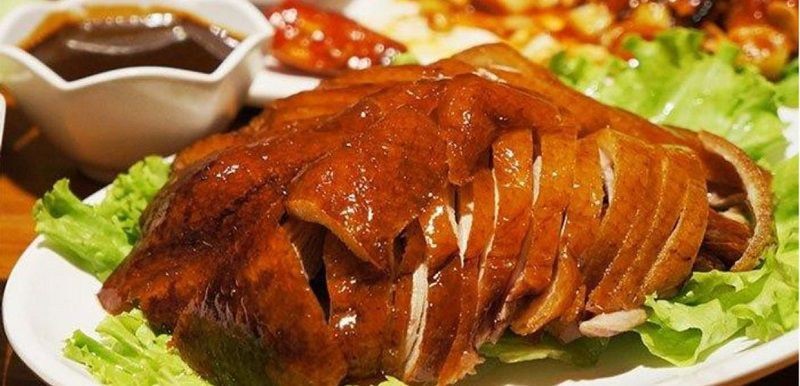 |
Roast goose is one of the most classic dishes to taste. It’s such a popular Hong Kong food that many people call it to be a national dish.
It’s a loved dish by both locals and tourists for its tender meat and crispy skin on the outside. It’s roasted until perfection over hot charcoal, which gives the meat its delicious flavor. It’s traditionally served with steamed white rice and plum sauce on the side.
Where to eat:
Yat Lok, G/F, 34-38 Stanley Street, Central, Hong Kong
Tai On Building in Sai Wan Ho
Fish Balls
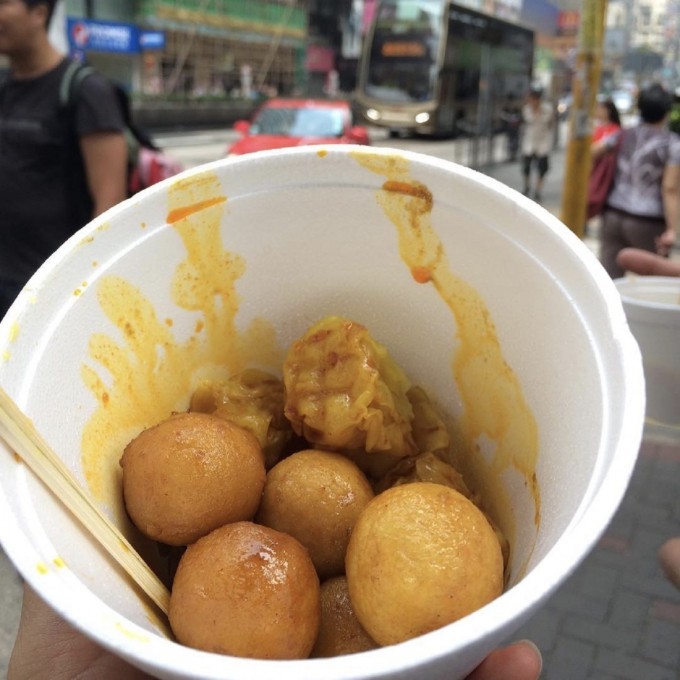 |
Fish balls are a typical Hong Kong snack, made of fish meat and can be pided into two varieties.
One is the well-known cooked food sold by street venders. Its history can be tracked back to the 1950s. This type of fish balls are made of fried fish meat. Food stalls often sell them with spicy or sweet sauces.
The other kind is sold uncooked and usually served as an important ingredient of hot pot, or cooked with noodles in hot soup. The price is higher and taste different from the first type. These are available in traditional markets and super markets.
Hong Kongers eat millions of these compressed fish-meat snacks every day. And with a stall stewing fishball skewers in almost every 7-Eleven in the city, they're as ubiquitous and as accessible as that other classic Hong Kong snack, siu mai dumplings.
Where to eat:
On Lee, 22 Shau Kei Wan Main Street East, Shau Kei Wan, Hong Kong
Tung Tat Food Shop, G/F, 172 Fa Yuen Street, Mong Kok, Kowloon
Sweet and sour pork
No, it isn't just for gwailos. Sweet and sour pork, called "gu lo yuk," is also a comfort food craved by Hong Kongers. The Cantonese original is made with vinegar, preserved plums and hawthorn candy for a nearly scarlet color and that sweet-sour tang. Nowadays, it's mostly made with ketchup and coloring.
Where to eat:
Luk Yu, G/F-3/F, 24 Stanley Street, Central, Hong Kong
Hop Yik Tai, 121 Kweilin Street, Sham Shui Po, Kowloon
For Kee, Shop J-K, 200 Hollywood Road, Sheung Wan, Hong Kong
Five-layer roast pork
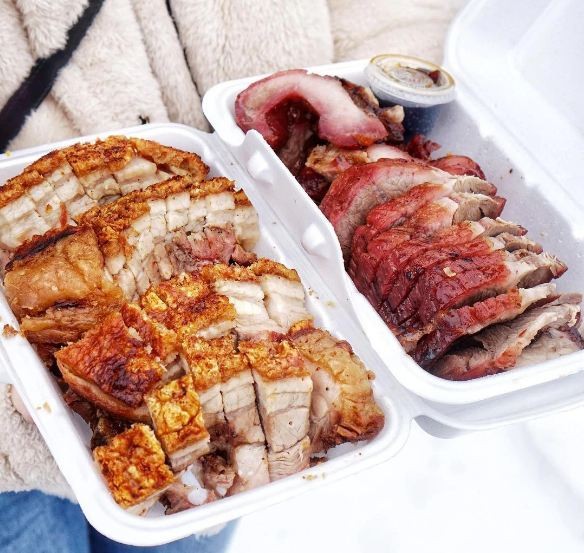 |
A great piece of "siu yuk" should have a top layer of crackling skin, then alternating slivers of fat with moist meat, and a final salty-spiced layer at the bottom.
Euphemized as five-layer meat, the morsels are served with sharp yellow mustard to cap off an overwhelming experience of textures and flavors all rendered from a humble slice of pork belly.
Where to eat:
Dundas Street in Mong Kok
Phoenix Talons (Chickens' Feet)
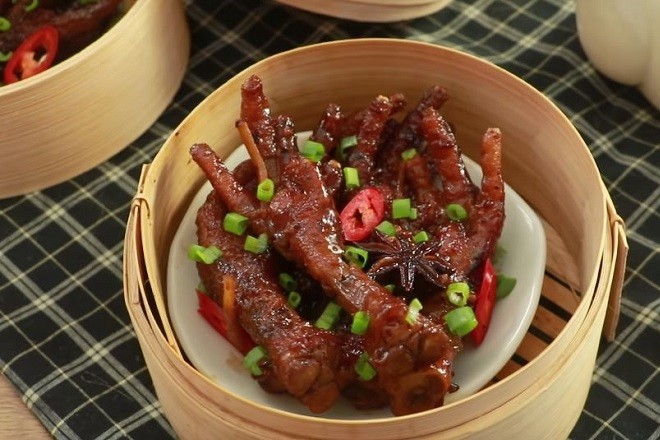 |
In Guangdong culture, people like using the word "phoenix" to represent chicken. The other reason probably is in Chinese pronunciation, phoenix (feng) sounds more beautiful to Chinese than chicken.
Though foreigners might feel a bit apprehensive when hearing its name, Chinese people, especially the older generation, are fond of phoenix talons. It’s important to cut off all the nails of the chicken feet before frying them.
The fried chicken feet are placed on a small plate, and placed into a bamboo steamer. After frying and steaming, chicken feet become very soft and you can easily chew the bones. Phoenix talons can be served inpidually as well as with pork ribs and rice.
So they look awful, but once you get over that, what is there not to love about chicken feet?
Just like head cheese or coq au vin, Cantonese-style chicken feet are a perfect marriage of thrift and culinary genius. Euphemized as "phoenix talons" in Chinese, chicken feet are typically deep fried then stewed in a black bean sauce.
The cartilage softens to a melt-in-the-mouth consistency and great practice is needed to spit out the little bones in that dainty manner perfected by grandmas in dim sum restaurants across town.
Lei Garden skips the deep-frying and stews their chicken feet in abalone sauce, resulting in a wholesome, more texturized Hong Kong food treat.
Consuming phoenix talons is good for skin and bone, because they contain much collagen and calcium. Women who are looking for better skin should eat more.
Soy-braised cuttlefish or octopus
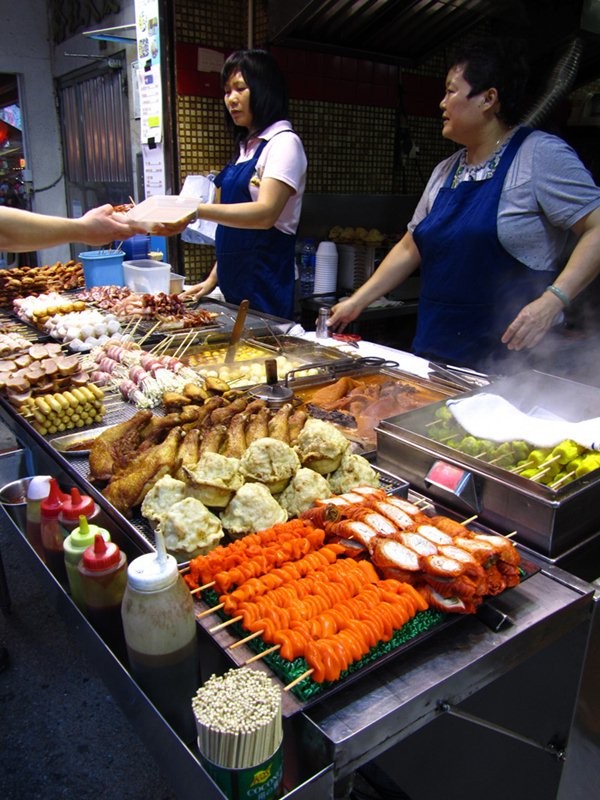 |
Bright orange and with tentacles and suction cups still intact, these might not be the most visually appealing of Hong Kong’s street foods, but they sure are delicious. The cuttlefish and octopus are usually boiled quickly until just tender and then dipped in a soy-based marinade for flavour. Eat them on a bamboo stick with a lick of mustard, as is de rigueur at the much-loved Fei Jie street stall in Mong Kok.
Stuffed three treasures
 |
The ‘three treasures’ can refer to any number of things, but the most popular trio is green bell pepper, aubergine and sliced red sausage (tofu is a much-loved option too). These are filled or smeared with carp paste and then fried until greasy and delicious. This snack may be dripping in oil, but hey, there are vegetables in the mix, so it must be healthy, right? Visit JarGor 1996 for your three-a-day.
Clay Pot Rice
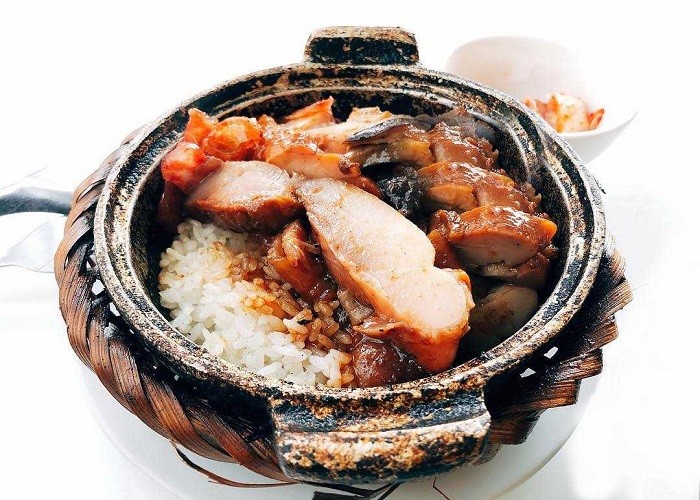 |
Clay Pot Rice is a signature rice meal dish in Hong Kong that’s cooked in a clay pot to create a unique earthy aroma.
The rice is mixed with flavorful ingredients such as traditional preserved sausage, meat, green onions and seasonings such as soy sauce, fish sauce, sugar and white pepper.
The pot is set to simmer over a flame with the lid covering the pot the entire cooking process. This is to ensure that the moisture and flavor are completely sealed in the pot.
Clay Pot Rice is served in the hot pot to make the rice at the bottom crispy and aromatic. It’s the bottom rice that’s the best part, because it gives the dish its iconic flavor.
Where to eat:
Kwan Kee Claypot Rice, Shop 1, Wo Yick Mansion, 263 Queen's Road West, Sai Ying Pun, Hong Kong
Hot pot
Whenever the temperature drops and the weather gets chilly in Hong Kong, a good hotpot is the go-to-method to warm up. But unlike claypot rice and snake soup, which tend to be seasonal delights, Hongkongers crave hotpot all year round.
Where to eat:
8Pots, 77 Kimberley Road, Tsim Sha Tsui, Hong Kong
Dong Lai Shun (Tsim Sha Tsui), B/F, The Royal Garden, 69 Mody Rd, Tsim Sha Tsui, Hong Kong
Lau Haa Hotpot Restaurant, Shop A, B/F&G/F, Lockhart House, 440 Lockhart Road, Causeway Bay, Hong Kong
Market Hotpot, 2/F, Dundas Square, 43H Dundas Street, Mong Kok, Hong Kong
Cheung fun
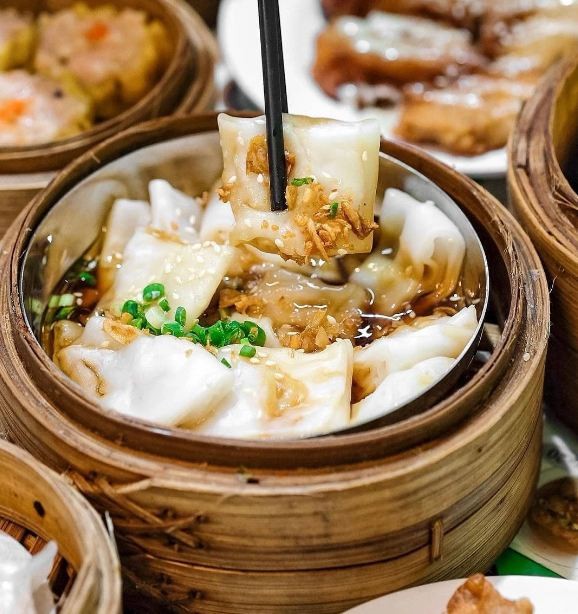 |
Cheung fun (rice noodle rolls), a mainstay of teahouses and dim sum restaurants, are pulled using rice flour mixed with tapioca flour and water. This mixture is poured into a flat, rectangular steamer lined with a breathable fabric. After steaming, the mixture forms into a springy, noodle-like sheet, which is then folded into long rolls, cut, and served with sweet soy sauce.
While cheung fun is served similarly in both restaurants and street stalls, you might find the street version is a bit less silky, and comes with less choice of filling. But at its lower price point, and how filling it is (especially with toppings such as roasted pork and shrimp), it’s pretty unbeatable.
Many street-side snack vendors have taken to serving them smothered in sauces like peanut and chili sauce, and its consequent heartiness has transformed it into one of Hong Kong’s favourite things to eat standing up.
Stinky tofu
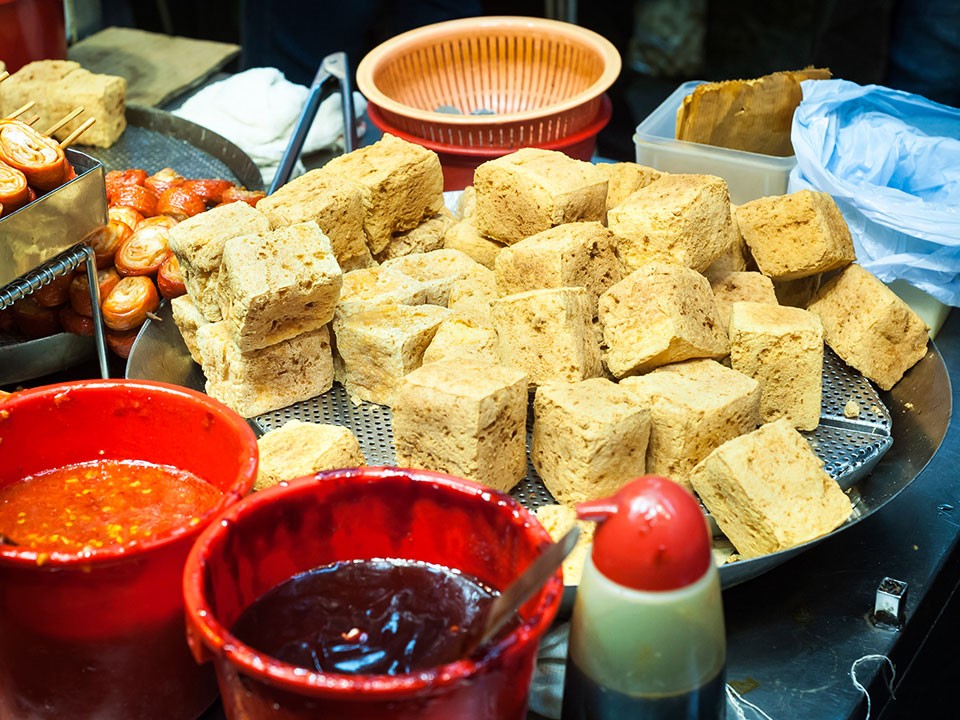 |
No doubt you will have heard or read about the stench emanating from one of the strangest foods to come out of this part of the world.
But nothing can really prepare you for the stink. Smelly tofu, like durian, is one of Asia's most iconic "weird foods."
The stench is a result of fermentation of the tofu and it is such an overpowering smell you'll be hard-pressed to shake it off for months to come. But Hong Kongers really love that stink. Well, most Hong Kongers.
Dim Sum
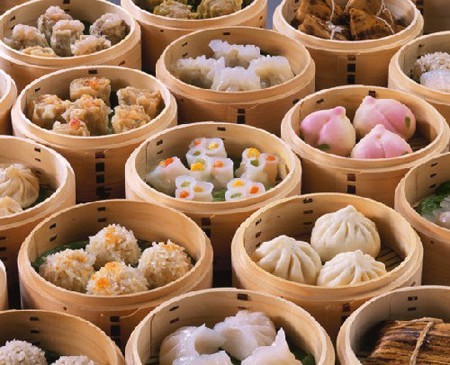 |
A Hong Kong version of dining with small dishes, dim sum includes classics such as har gao (steamed shrimp dumplings wrapped in a thin, translucent skin), char siu bao (barbecued pork bun) and siu mai (Chinese dumpling).
Here are a few dim sum dishes!
Siew Mai is one of the most loved Dim Sum dishes in Hong Kong. Unlike regular dumplings that are fully wrapped, Siew Mai is an open-top dumpling.
The skin is wrapped around the sides and at the bottom, very much like a cup. They are then filled to the brim and topped with fish roe or a a green pea.
Har Gow is the Cantonese name for the Hong Kong-style shrimp dumplings – one of the most popular dishes in a traditional Dim Sum meal.
The dumpling is characterized by the silky wrap that’s made of wheat starch, tapioca, and lard. The fillings are usually made of fresh shrimp and bamboo shoots with a light seasoning.
Har Gow is often eaten alongside Siew Mai.
Where to eat:
Lin Heung, 160-164 Wellington Street, Central, Hong Kong
House Of Orient, 2/F, Entertainment Building, 30 Queen’s Road, Central, Hong Kong
Luk Yu Tea House, No.24-26 Stanley Street, Central, Hong Kong
Fuk Wing Street and Kweilin Street in Sham Shui Po
Lo Mai Gai
Lo Mai Gai is a traditional rice dish made with sticky glutinous rice, chicken, Chinese mushrooms, Chinese preserved sausage, scallions and sometimes with dried shrimp and salted egg as well.
The rice dish is wrapped in dried lotus leaves and steamed until fully cooked. It’s usually eaten for breakfast and is also commonly eaten during a Dim Sum meal.
Wonton Soup
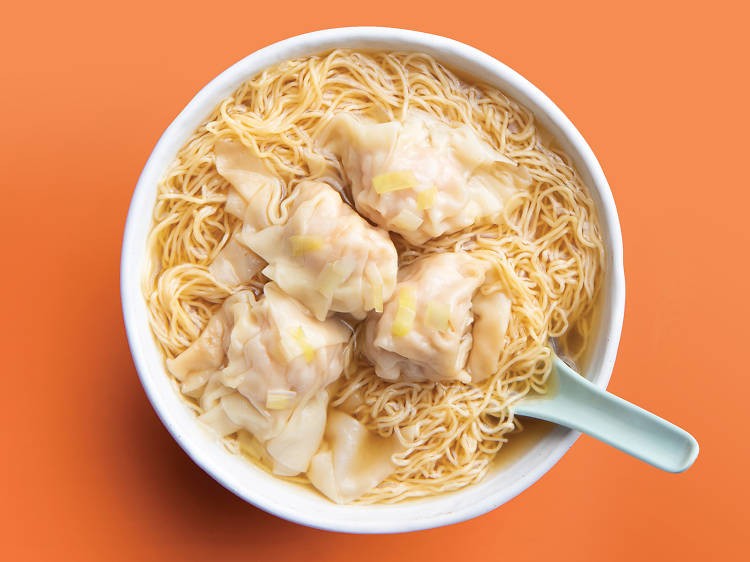 |
A succulent meat and shrimp filling is encased in a silky smooth dumpling wrapper before being served in a clear, light broth.
Wontons are traditional Chinese thin-skinned dumplings filled with a variety of ingredients. Hong Kong-style wontons are filled with shrimps and lightly seasoned pork, flavored with both ginger, yellow chives, soy sauce, and sesame oil.
In the early days, wontons were prepared during the Winter Solstice Festival as a festive dish, however, today it’s commonly found in most restaurants.
Where to eat:
Mak's, G/F, 77 Wellington Street, Central, Hong Kong
Mido Café, G/F, 63 Temple Street, Yau Ma Tei, Hong Kong
Snake Soup
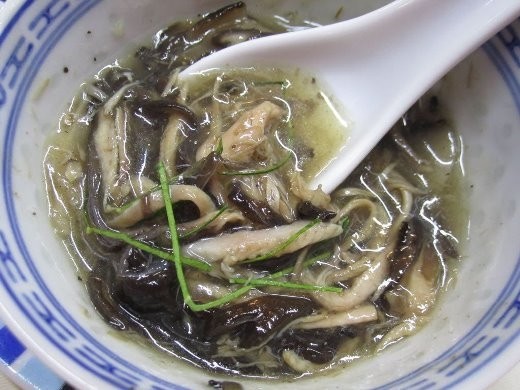 |
Winter isn’t just about hot pot or clay pot rice in Hong Kong. Another famous local winter warmer is a bowl of snake soup. Not as gruesome as it sounds, this traditional Chinese dish can be delicious if you head to the right restaurant.
Snake soup is regarded as a Chinese delicacy in Hong Kong. It’s believed to give medicinal benefits and nutritional values, but also for making you look younger.
To prepare this dish, different types of snake meat are boiled together with ingredients such as pork bones, chicken, and spices until the meat is tender and the taste is slightly sweet.
Where to eat:
She Wong Yee, 34 Percival Street, Causeway Bay
Ser Wong Fun, 30 Cochrane Street, Central
She Wong Lam, 13 Hillier Street, Sheung Wan
Beef Brisket Noodle
Beef Brisket Noodle is a popular Hong Kong dish that’s loved by both locals and tourists.
To prepare the dish, beef brisket, carrot, radish, ginger, and spring onions are left to simmer together with spices like cumin, clove, star anise, cardamom pods, cinnamon, and Galangal.
The slow cooking process may be long, but it’s necessary to ensure that the brisket stays both tender and flavorful.
Where to eat:
Samsen, G/F, 68 Stone Nullah Lane, Wan Chai, Hong Kong
Sister Wah, 13A Electric Rd, Tin Hau, Hong Kong
Tea eggs
Tea eggs are traditional street food in Hong Kong that are loved by many. These curious-looking things are made by hard boiling eggs, and then gently shattering their shells before soaking them in tea. The result is an egg that, after the fractured shell is peeled away, reveals a beautiful, marbled egg white that looks like a piece of art rather than a street snack.
Take a bite and savour the subtle tea flavour in a unique kind of street food that is great for those on the go.
Pineapple Bread
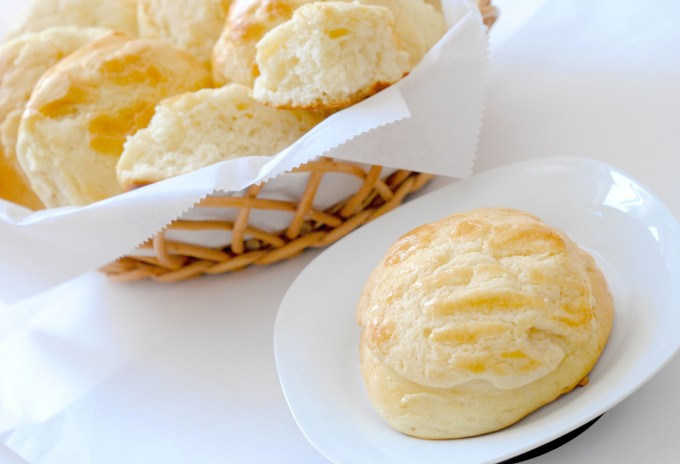 |
Pineapple Bread (or bo lo bao) is a sweet bread originating in Hong Kong, very popular, and found in nearly every bakery.
The surface of the bread looks a pineapple, hence the name, but the traditional variety doesn't actually contain pineapple. A mixture of sugar, eggs, flour, and lard form a crisp surface with soft bread underneath, and it's best eaten when hot.
Here are a few other facts about this delicious bakery snack that you might not know!
“Pineapple Bun” was once nominated as a typhoon name but rejected on the grounds that it would sound silly in otherwise serious news reports of the storm
The famous snack appeared in animated form in the 2004 film McDull, The Prince of the Pineapple Bun with Butter.
In 2014, the pineapple bun made it onto the government’s list of 480 “items of living cultural heritage” (along with fire dragon dances, kung fu and snake wine).
A Japanese variety of the pineapple bun is the “melonpan”, whose top resembles a rockmelon or cantaloupe.
Among the famous places to buy the buns in Hong Kong is Tai Tung Bakery in Yuen Long, which has made around 1,000 of them daily for well over 70 years.
Where to eat:
1966 Baking Alliance, Shop 246B, 2/F, 93 Queen’s Road Central and 80 Des Voeux Road Central, Central, Hong Kong
Kwai Chung Plaza
Egg tart
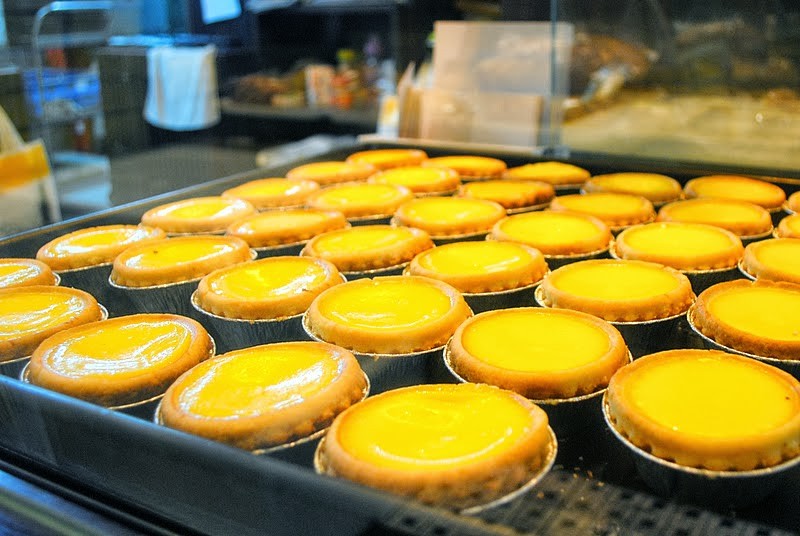 |
Like many classic Hong Kong food dishes, the origins of the egg tart are a bit murky, but it seems likely that they are yet another example of British tea time snacks -- custard tarts, in this case -- that were adapted to local Chinese tastes.
Since they became popular in the 1940s, two varieties of egg tarts have emerged: one with a flaky puff pasty shell and another with a sweet shortbread crust. Both are filled with a rich custard that is much more eggy and less creamy than English custard tarts or Portuguese pasteis de nata.
Where to eat:
Tai Cheong Bakery, 35 Lydhurst Terrace, Central, Hong Kong
Bakehouse, 14 Tai Wong Street East, Wan Chai, Hong Kong
Bakehouse Soho, G/F 5 Staunton Street, Central, Hong Kong
Hoover Bakery, 136 Nga Tsin Wai Road, Kowloon City, Hong Kong
Egg Waffles
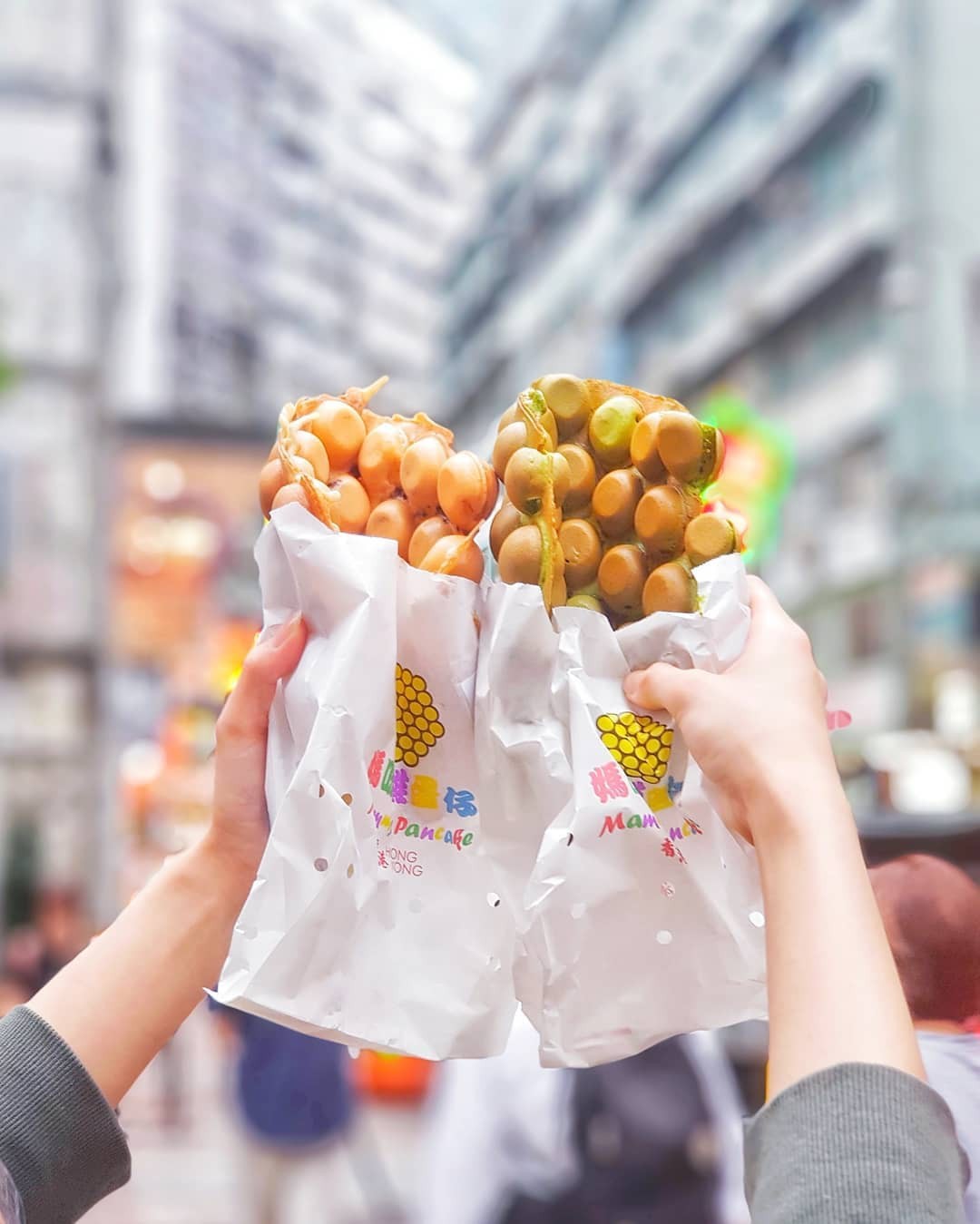 |
Affectionately called gai daan zai (“mini chicken egg”), this is Hong Kong’s version of a waffle. A crispy exterior hides the soft, sweet sponge inside. Can be served plain or with toppings such as chocolate.
Where to eat:
Master Low Key, Shop B3, G/F, 76A Shau Kei Wan Main Street East, Shau Kei Wan, Hong Kong
Lee Keung Kee North Point Egg Waffles, 492 King’s Road, North Point, Hong Kong Island
More Eggettes, Shop B2, G/F, 17 Yu Chau Street, Prince Edward, Hong Kong
Shau Kei Wan Main Street East
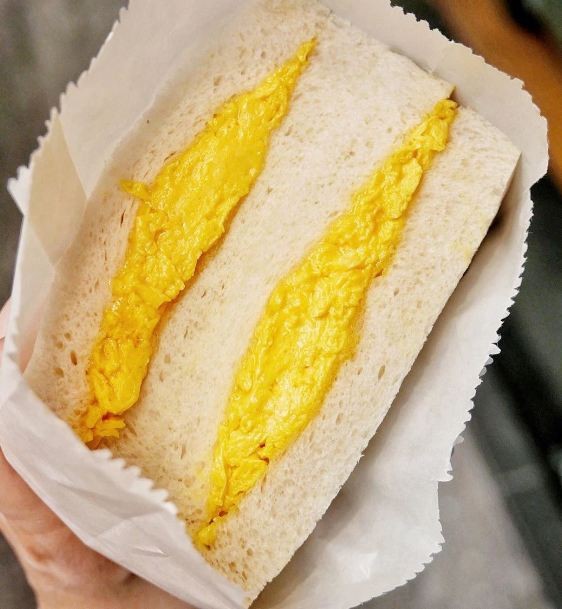 |
Egg sandwich
The humble scrambled egg sandwich occupies a special place in the hearts of Hongkongers. A good egg sando should contain a fluffy, creamy centre between two slices of butter-smeared white bread – it’s simple, yes, but also incredibly satisfying, whether it’s enjoyed during breakfast or as an afternoon snack.
Where to eat:
Luen Fat, Shop 1, G/F, 2-4 Hau Wong Rd, Kowloon City, Hong Kong
Milk Tea
Hong Kong milk tea represents a unique twist on milk tea with a black tea base flavored with evaporated or condensed milk.
Hong Kong milk tea represents a fusion of Hong Kong and British tea culture. The British practice of taking milk with tea became popular in Hong Kong during British colonial rule. Unlike a classic British milk tea, however, Hong Kong milk tea typically uses evaporated or condensed milk instead of fresh milk. If evaporated milk is used, sugar is often also added to sweeten the tea. Hong Kong milk tea usually has a hearty black tea base, and is sometimes also made using pu-erh tea.
In Hong Kong, milk tea is sometimes combined with coffee to create a drink known as yuenyeung. This drink is typically made by combining three parts coffee with seven parts milk tea, and can be served hot or iced.
Where to drink:
Sun Hang Yuen, G/F, 186 Yu Chau Street, Sham Shui Po, Hong Kong
Lo Tak Court
Yau San Street in Yuen Long
Lan Fong Yuen, 2 Gage St, Central, Hong Kong
Tsim Sha Tsui, B/F, Chungking Mansions, 36-44 Nathan Rd, Hong Kong
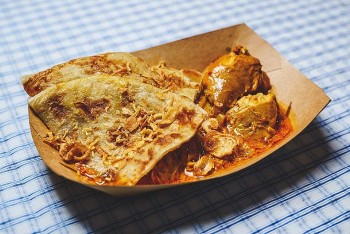 | 6 Flavorful Indonesian Foods You can Make at Home Put these dishes on your Indonesia bucket list; you won’t have trouble finding them when you’re finally able to travel now. |
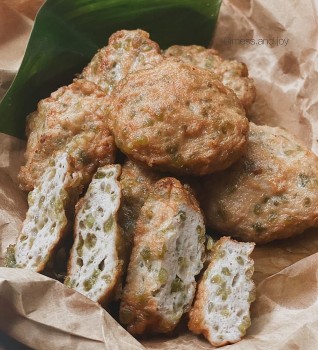 | Vietnamse Cuisine: How to Make 7 Great Autumn Dishes Autumn is not only considered the most beautiful season of the year, but also famous for delicious snacks, symbolizing the exquisite Hanoian cuisine |
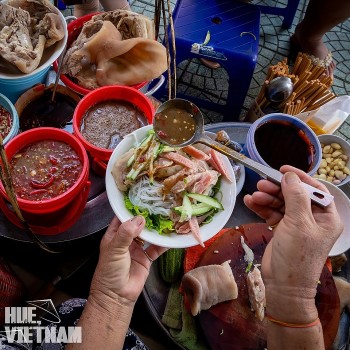 | Must-try Dishes in the Ancient Capital of Vietnam Through Photos of Local Photographer 12 yummy must-try dishes in Hue city. |
Recommended
![[Photo] Peace Boat delegates immersed in Quang Ninh's Hues](https://vietnamtimes.org.vn/stores/news_dataimages/2025/052025/03/13/15ba8cdc6fa53a282f0ef99e14eb9cc5.jpg?rt=20250503130632) Multimedia
Multimedia
[Photo] Peace Boat delegates immersed in Quang Ninh's Hues
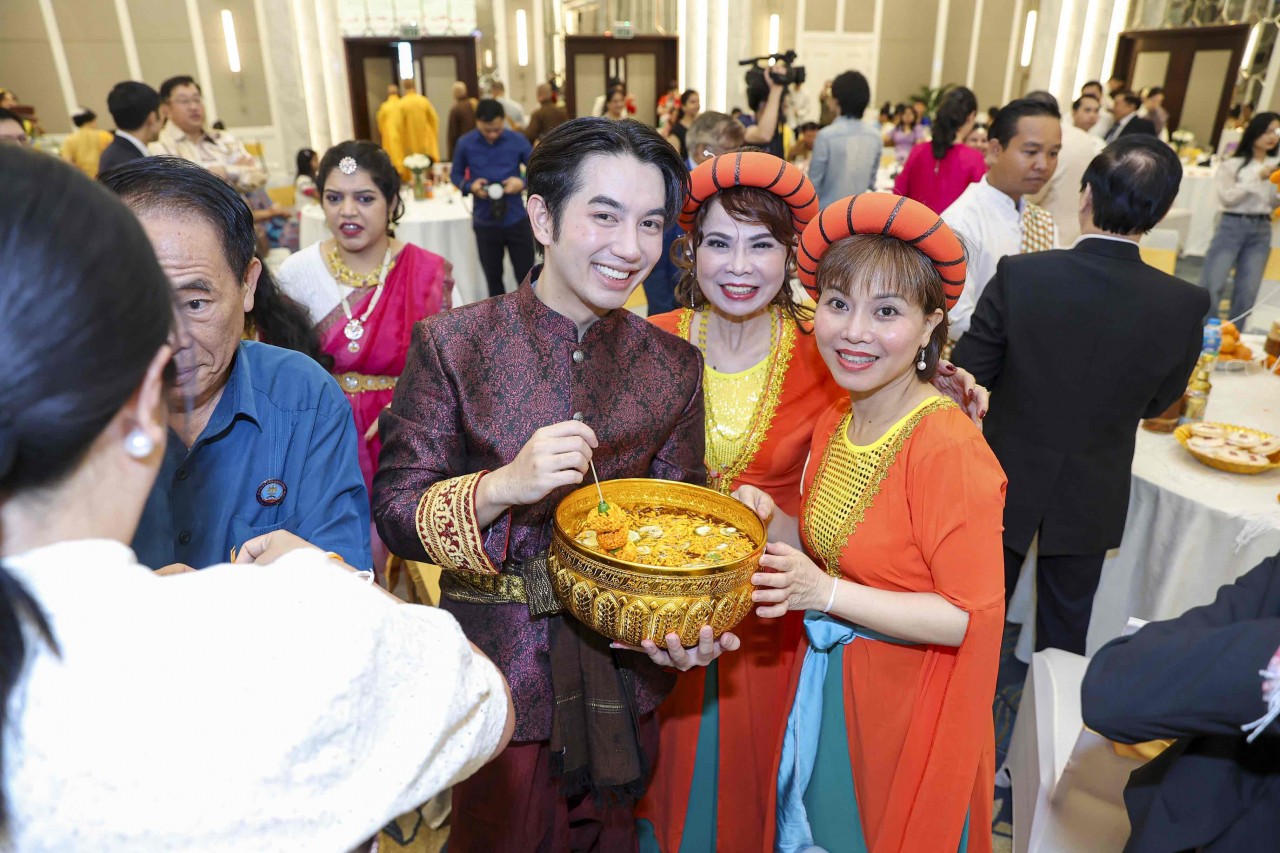 Multimedia
Multimedia
Hanoi Hosts Friendship Exchange Celebrating 2025 Traditional New Year of Asian Countries
 Multimedia
Multimedia
Vietnamese People's Army Forcers in full dress parade rehearsal to celebrate the 50th anniversary of National Reunification
 Multimedia
Multimedia
In pictures: Fireworks Display in Hanoi Celebrates national reunification day
 Multimedia
Multimedia
Phong Nha-Ke Bang National Park Named Top Adventure Travel Site
 Multimedia
Multimedia
1,000 Women in Traditional Ao Dai Form Vietnam Map at Hoan Kiem Lake
 Multimedia
Multimedia
Vietnam’s Textile Industry Strengthens Position in Global Supply Chains
 Multimedia
Multimedia


